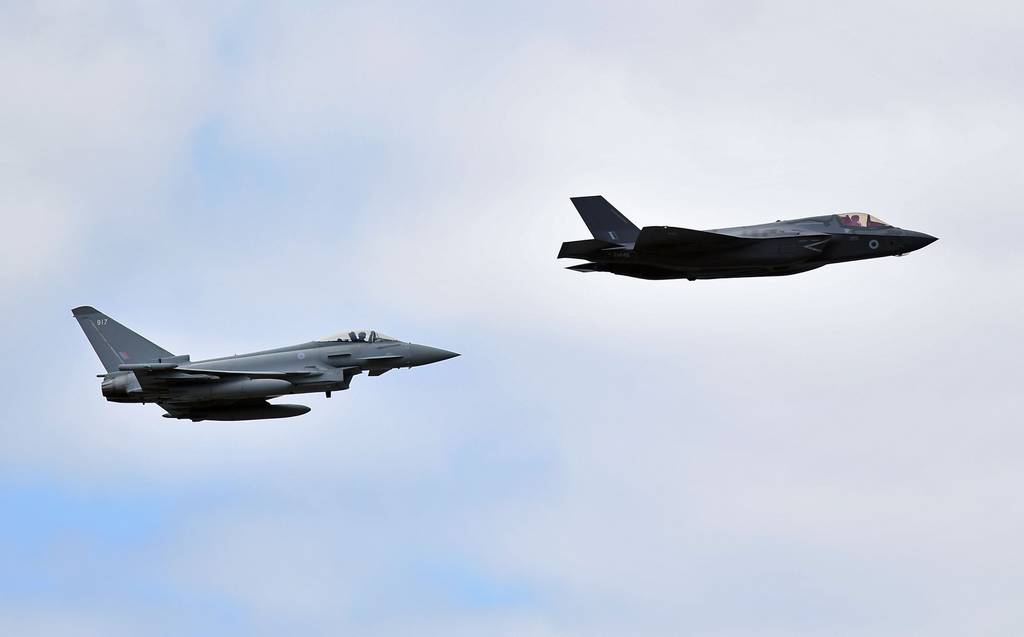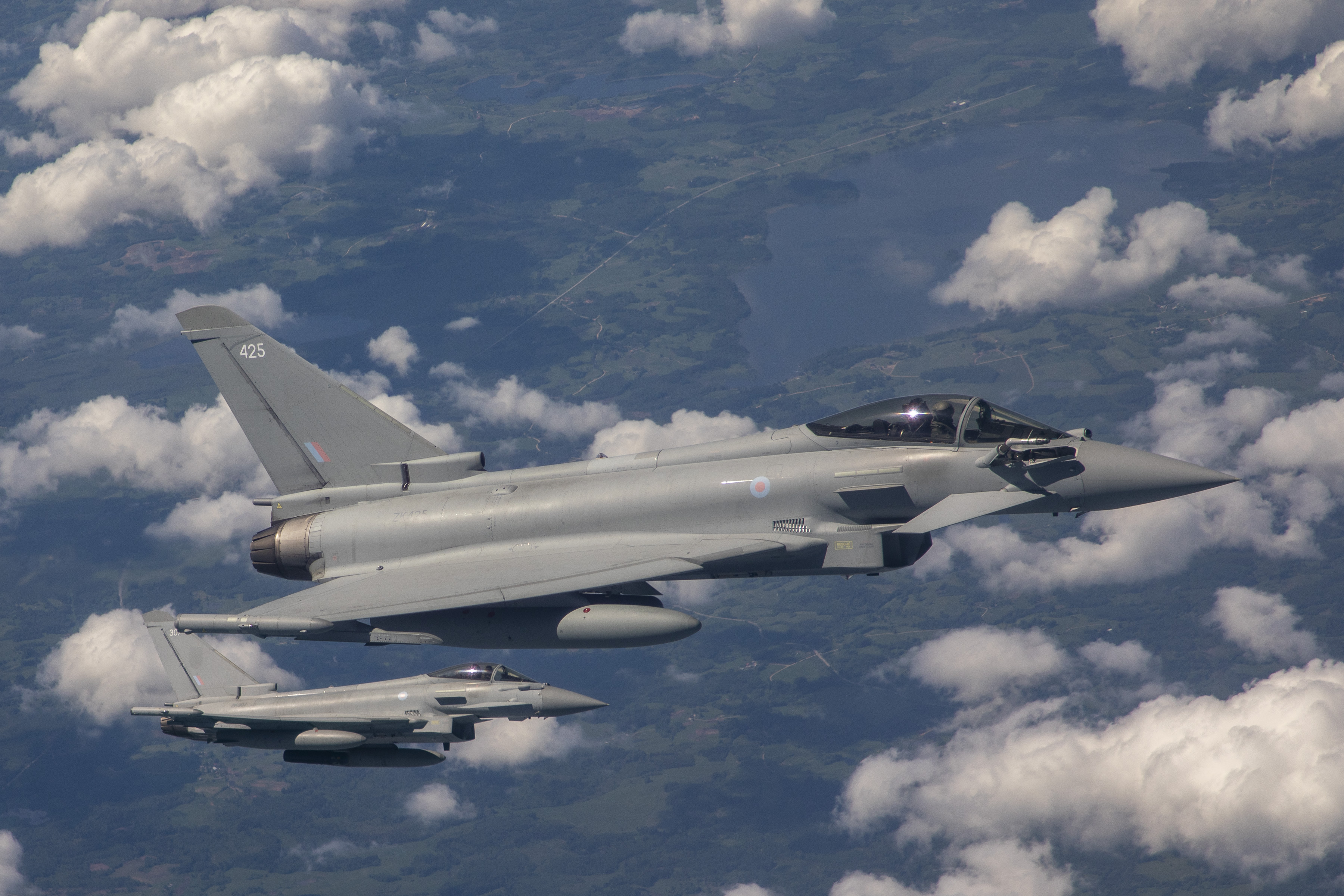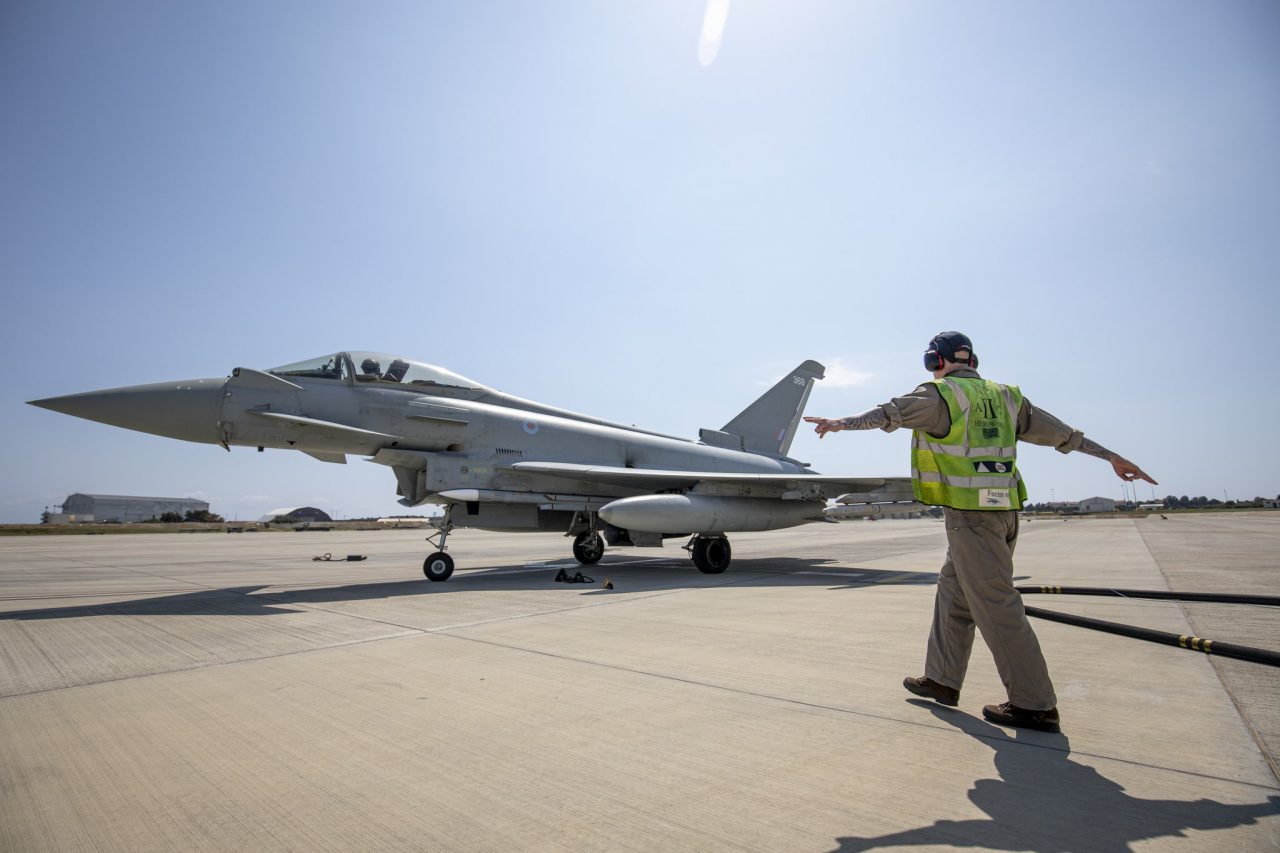The British Royal Air Force recently participated in a three-day air combat training exercise alongside NATO and Joint Expeditionary Force partners in the Baltic region.
The intensive three-day drill involved fighter jets from Belgium, Spain, Finland, France, and Germany flying over Estonian and Lithuanian airspace, announced RAF in a statement. The exercise demonstrated cooperation and cohesion between NATO and Joint Expeditionary Force air forces.
The British F-35s and Typhoons performed a range of training serials in both offensive and defensive roles. In the initial part of the exercise, they flew with Belgian F-16s to simulate defending the airspace against simulated attacks by Spanish F-18s, Finnish F-18s, and German Typhoons.
The UK aircrafts exchanged roles on the final day of the exercise, becoming the aggressor. Their mission was to carry out mock attacks on a Lithuanian airfield. The Spanish Air Force deployed F-18s, and the French Air Force employed Mirage 2000s to safeguard the airfield.
Meanwhile, a UK Voyager aircraft from RAF Brize Norton aided the aircraft by providing air-to-air refueling to extend the timeframe of the air combat sorties. The training’s main objective was to practice safeguarding the Baltic States’ airspace and to improve communication and management procedures.

“The training was competitive and hard-fought. It gave all participants an ever-greater understanding of each other’s capabilities and tactics. The exercise was one of a series of NATO exercises in the region to ensure the alliance’s preparedness to respond to threats,” said RAF.
With the Ukraine war in the backdrop, the Royal Air Force has intensified its efforts to enhance interoperability with its allies. As the EurAsian Times reported, in May, the British F-35s, Eurofighter Typhoons, and Czech Gripens participated in an air maritime simulation over the Baltic Sea to safeguard a US Navy Destroyer.
Separately, RAF Typhoons from the 83rd Expeditionary Air Group also recently carried out similar drills with US Air Force F-16s in coordination with USS Gonzalez, an Arleigh Burke-class destroyer.
These exercises test various scenarios and increase interoperability between RAF fast aircraft and ships from the United Kingdom’s key military ally worldwide.
Furthermore, the country is striving to strengthen its air power by developing a sixth-generation fighter plane and considering updating its fleet of Eurofighter Typhoons.
Upgrading UK’s Eurofighter Typhoon
Last month, British defense officials revealed they are waiting for top-level authorization to finish developing and producing an active electronically scanned array radar to enhance Royal Air Force Typhoon planes.
A Ministry of Defense official said, “We are putting in place what is going to be a massive contract,” carrying the program through to initial and full operational capability. Later, a spokesman of the Ministry of Defense confirmed that a contract proposal had been sent to ministers.

In 2020, BAE and radar manufacturer Leonardo UK signed a £317 million ($400 million) contract with the government to bring ECRS Mk2 up to a standard that will allow integration into the Typhoon.
However, the company ran into budgetary issues towards the end of the year. A Leonardo spokesman said the company “remains on track to meet those milestones.”
“Further development requires further investment,” the company spokesman added. “Subject to approval, the intent will be to complete the development of ECRS Mk2 hardware and software and then integrate the new radar onto the UK Typhoon aircraft through a four-nation program called P4E.”

What’s The Current Scenario
A consortium of the United Kingdom, Germany, Italy, and Spain carry out Typhoon development and production. The British Ministry of Defense plans to purchase 40 new sensor systems to outfit its Typhoon Tranche 3 fleet.
The initial operational capability, including radar, training, infrastructure, and other requirements, is scheduled for 2030. The Royal Air Force has yet to receive the first Mk2-equipped Typhoon. The Typhoon currently sports a mechanically scanned radar.
Meanwhile, Germany and Spain decided to equip their Typhoons with a less capable Mk1 version of the AESA radar. While the British chose the more powerful Mk2 version, the Typhoon partners are still working closely together on the upgrade program.
The upgrade is part of a more extensive capability improvement program aimed at keeping the Typhoon at the forefront of technological innovation while also reducing the technological gap before the advent of the British-led Tempest sixth-generation combat fighter, which will begin replacing the aircraft around 2035-2040.
- Contact the author at ashishmichel@gmail.com
- Follow EurAsian Times on Google News




